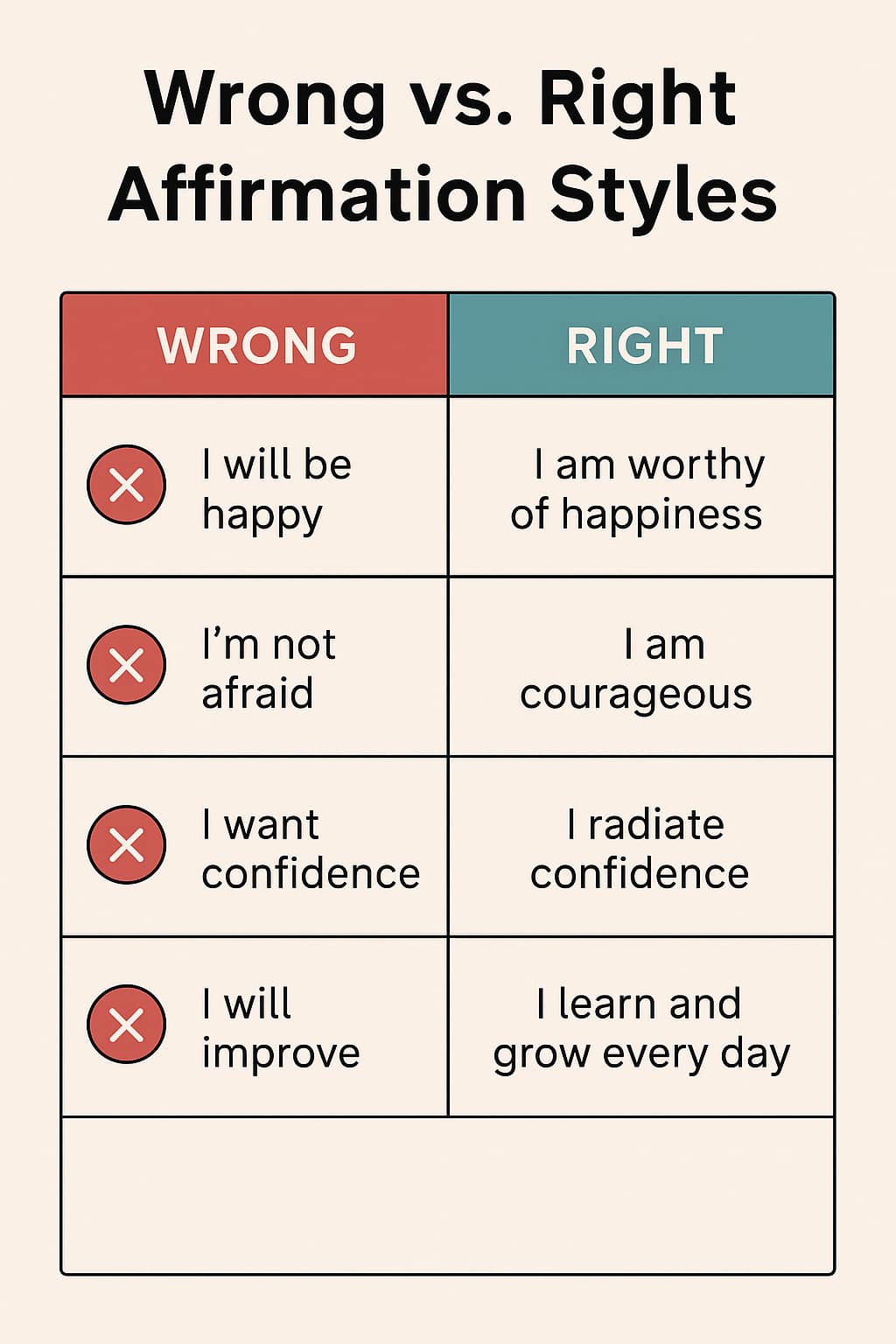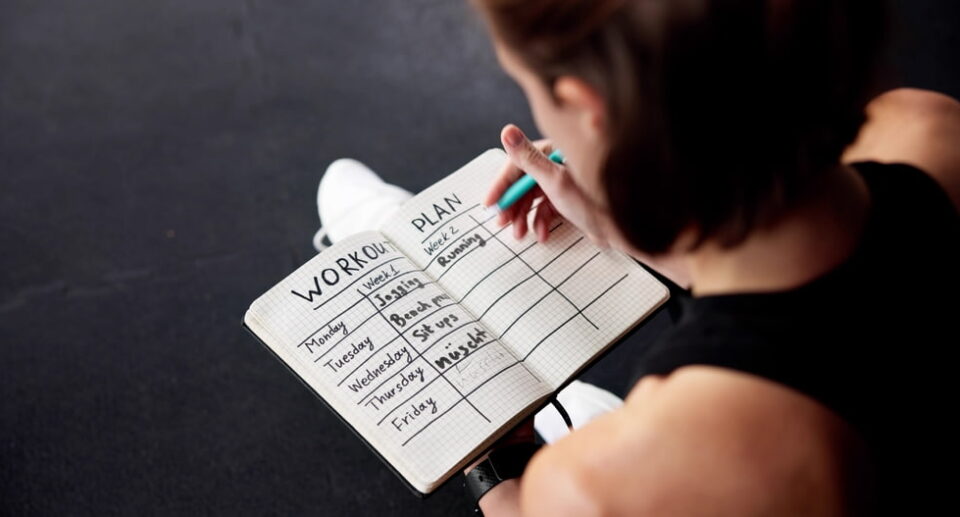How to Use Affirmations to Boost Self-Confidence


Introduction – Why Affirmations Matter for Building Self-Confidence
Self-confidence is not a gift it’s a skill. And one of the most practical tools to develop it is through positive affirmations. These are short, intentional statements designed to rewire your mindset, build inner belief, and silence self-doubt.
💬 “You become what you believe.” – Oprah Winfrey
Affirmations work by replacing negative self-talk with empowering thoughts. Repeating phrases like “I am worthy” or “I am capable” may sound simple but over time, your brain begins to internalize these beliefs.
Research published in Social Cognitive and Affective Neuroscience shows that self-affirmation activates brain regions associated with reward and stress reduction. [1]
For My CoreWellFit readers busy professionals seeking emotional fitness affirmations offer a quick, powerful mindset shift. You don’t need equipment or apps just your voice, your mind, and a few minutes a day.
This guide will walk you through 8 practical steps to make affirmations a daily habit and a long-term confidence booster.
Understand How Affirmations Rewire the Brain


To truly benefit from affirmations, you need to know how they actually work this isn’t just self-help fluff. Affirmations are grounded in neuroscience, specifically in a concept called neuroplasticity.
Neuroplasticity refers to your brain’s ability to form new connections and rewire itself based on what you repeatedly think, say, and do. When you consistently repeat positive affirmations, you create new thought patterns that can override old, limiting beliefs.
🧠 For example, if you’ve spent years thinking “I’m not good enough,” your brain reinforces that belief with supporting thoughts. But when you begin saying, “I am enough, I trust my abilities,” over and over, you begin to disrupt that old neural loop.
🧪 Backed by Research:
A study in Psychological Science found that affirmations enhance problem-solving and reduce defensiveness, especially in high-stress situations. [Source ›]
💡 Bottom Line:
Your brain listens to what you tell it. Use affirmations intentionally, and you’ll start training your mind to think more confidently just like a muscle gets stronger with reps.
Choose Affirmations That Align with Your Goals


Affirmations are most powerful when they are specific, personal, and emotionally meaningful. Generic phrases like “I am great” might feel good for a second, but without purpose or emotional connection, they fade quickly.
To truly boost self-confidence, choose affirmations that reflect your actual struggles and aspirations.
🎯 Ask Yourself:
What areas of my life do I feel least confident in?
What do I want to believe about myself?
What negative thoughts am I trying to replace?
💬 Examples of Goal-Aligned Affirmations:
If you fear failure: “I learn and grow from every challenge.”
If you doubt your worth: “I deserve success and happiness.”
If you struggle socially: “I express myself with confidence and clarity.”
🧠 According to clinical psychologist Dr. Ronald Alexander, “Affirmations work best when they reflect a core value or specific intention, not just surface-level positivity.”
✅ Pro Tip:
Write down 3–5 affirmations that reflect your current goals. Say them aloud daily preferably in the morning when your mind is fresh and focused.
Make It a Daily Ritual – Consistency Builds Confidence


Affirmations only work when they become a habit. Saying a few positive words once or twice won’t magically boost your confidence but turning affirmations into a daily ritual trains your brain to accept and act on those positive beliefs.
💬 “First we form habits, then they form us.” – Jim Rohn
🕒 When to Practice Affirmations:
Morning Routine: Start your day with intention and positivity.
Before Challenges: Use them to prepare for interviews, public speaking, or workouts.
Night Reflection: Repeat them before bed to rewire your subconscious during sleep.
📝 How to Practice:
Stand in front of a mirror (mirror work builds deeper emotional connection).
Say each affirmation aloud with emotion and belief.
Repeat 3–5 times with eye contact and clear voice.
Optional: Write them in a journal for reinforcement.
📖 A 2016 Harvard Health article states that combining affirmations with visualization and voice repetition increases emotional impact and memory retention.
✅ Just like a gym routine, consistency matters more than perfection.
Use Present Tense and Positive Language


For affirmations to influence your subconscious mind effectively, they must be stated in the present tense and with positive phrasing. This helps your brain believe the statement is already true, not something far off in the future.
❌ “I will be confident someday.”
✅ “I am confident and capable right now.”
Your brain responds to certainty and clarity. If you say something vague or future-focused, it remains a hope. But present-tense affirmations create an internal shift that builds belief over time.
💬 Examples of Effective Phrasing:
“I am proud of who I am becoming.”
“I speak with confidence and kindness.”
“I trust myself to handle whatever comes my way.”
📚 According to Cognitive Behavioral Therapy (CBT) principles, positively worded affirmations help reframe automatic negative thoughts (ANTs) that fuel low self-esteem.
⚠️ Avoid These Mistakes:
Don’t use negatives (e.g., “I am not afraid”) → Say “I am brave.”
Don’t use future-tense (“I will…”) → Say “I am…”
✅ This technique makes affirmations far more effective—and reinforces your belief system faster.
Combine Affirmations with Visualization for Deeper Impact


Affirmations become dramatically more effective when you visualize them as already true. Visualization activates your brain’s sensory regions, making the affirmation feel real, not just theoretical.
💬 “What you think, you become. What you feel, you attract. What you imagine, you create.” – Buddha
When you speak an affirmation like “I am confident in social situations,” close your eyes and visualize yourself walking into a room, standing tall, smiling, and speaking clearly. Feel the emotion. See the result.
🧠 Why Visualization Works:
A study from Frontiers in Psychology found that mental imagery combined with positive self-talk increases performance and emotional control, especially in athletes and high-pressure situations.
📝 How to Practice:
Say your affirmation aloud.
Pause, close your eyes, and imagine it happening now.
Focus on sensory details: What do you see, hear, feel?
Do this for 2–5 minutes daily.
✅ Combining visual and verbal affirmation is like a confidence supercharge—it imprints belief both emotionally and neurologically.
Use Affirmations to Interrupt Negative Self-Talk in Real Time


Affirmations aren’t just for quiet mornings or journaling they’re also powerful tools in the heat of the moment. When self-doubt or negative thoughts creep in, you can use affirmations to interrupt that inner critic and reframe your mindset on the spot.
💬 “You can’t stop negative thoughts from showing up, but you can stop feeding them.” — Mel Robbins
🧠 Example:
Imagine you’re about to speak in a meeting, and your mind says:
“What if I mess up?”
Interrupt that thought by affirming:
“I have something valuable to say, and I say it with clarity and calm.”
✅ How to Apply in Real-Time:
Notice the negative thought or emotion
Pause – take one deep breath
Replace it with a relevant, strong affirmation
Repeat it mentally or whisper it if needed
📚 A 2021 study in Cognitive Therapy and Research found that practicing real-time cognitive reframing, such as with affirmations, reduces anxiety and increases emotional regulation.
✅ Practicing this step helps build “emotional muscle memory,” so confidence becomes your default—not doubt.


Reflect, Adapt, and Make It Your Own
The journey to self-confidence isn’t one-size-fits-all and neither are affirmations. That’s why the final and ongoing step is to reflect regularly, observe what’s working, and adapt your affirmations so they evolve with you.
Your mindset today won’t be the same six months from now. As your goals shift and your confidence grows, your affirmations should reflect your next level of self-belief.
🧘♂️ Weekly Reflection Questions:
Which affirmations felt powerful this week?
Did I believe them more deeply than last week?
Where did I notice a confidence shift in daily life?
Write down your answers and adjust accordingly.
🛠️ Update Your Practice When Needed:
Swap out affirmations that feel stale
Add new ones for emerging challenges (e.g., leadership, relationships)
Try saying them in new settings: walks, workouts, mirror, journaling
💬 “Affirmations are not about becoming someone else. They’re about returning to who you truly are.” – Louise Hay
🧠 Final Thought:
Affirmations aren’t magic but they’re a powerful mirror. When practiced with intention, consistency, and emotion, they help reveal the strongest, most confident version of yourself.
✅ Congratulations! You’ve now learned how to create and use affirmations to build real, lasting confidence step by step, word by word.









